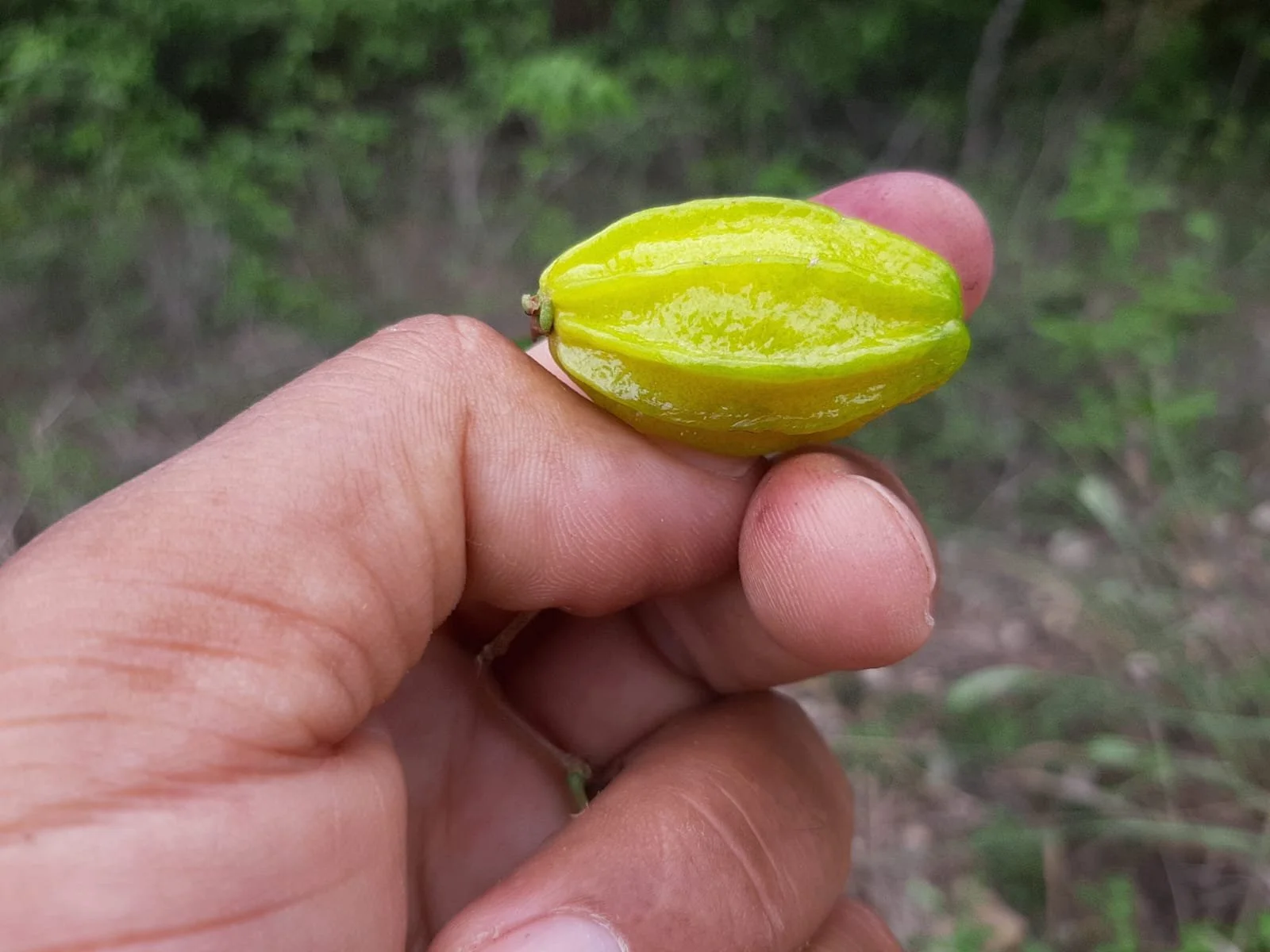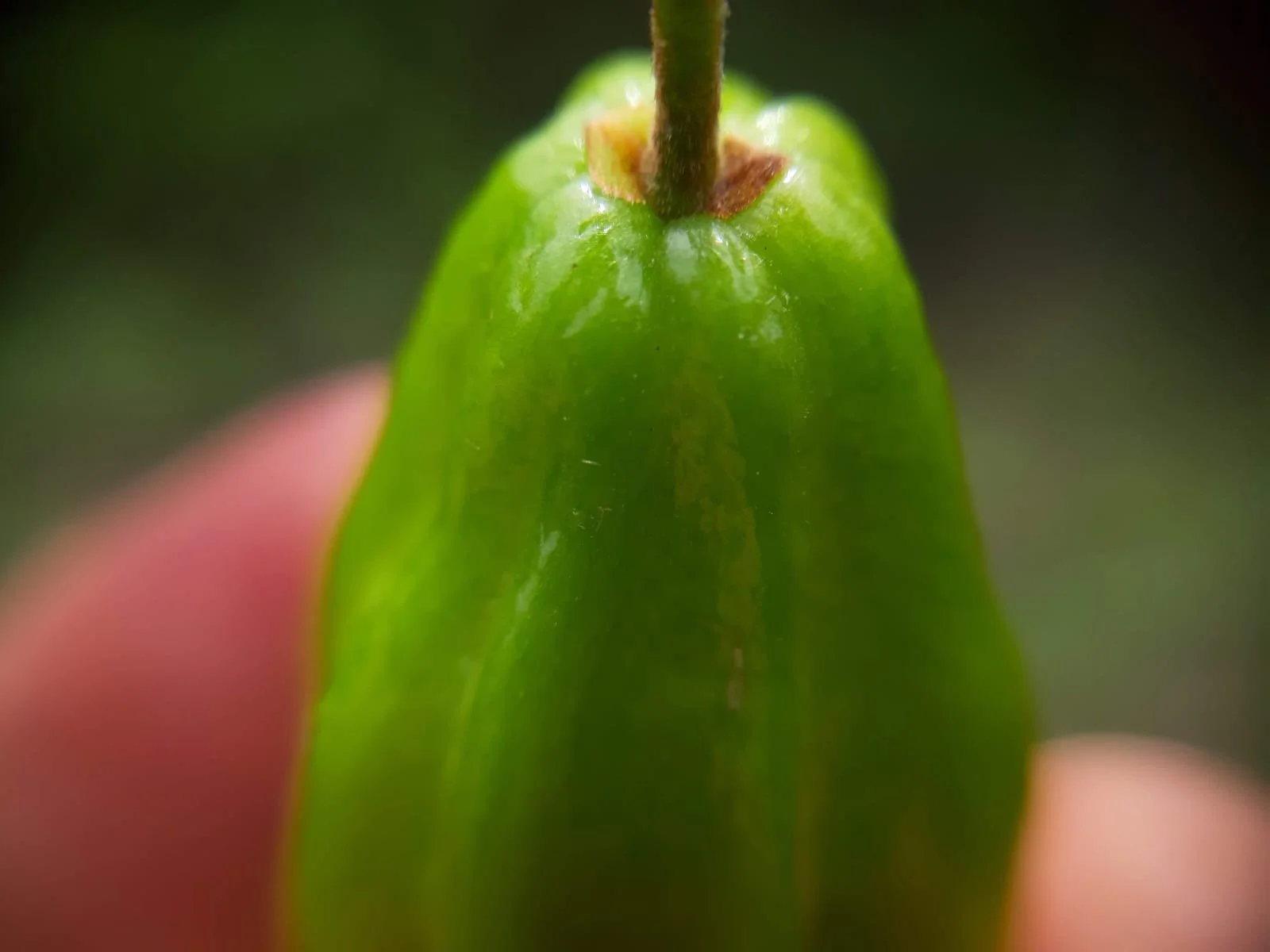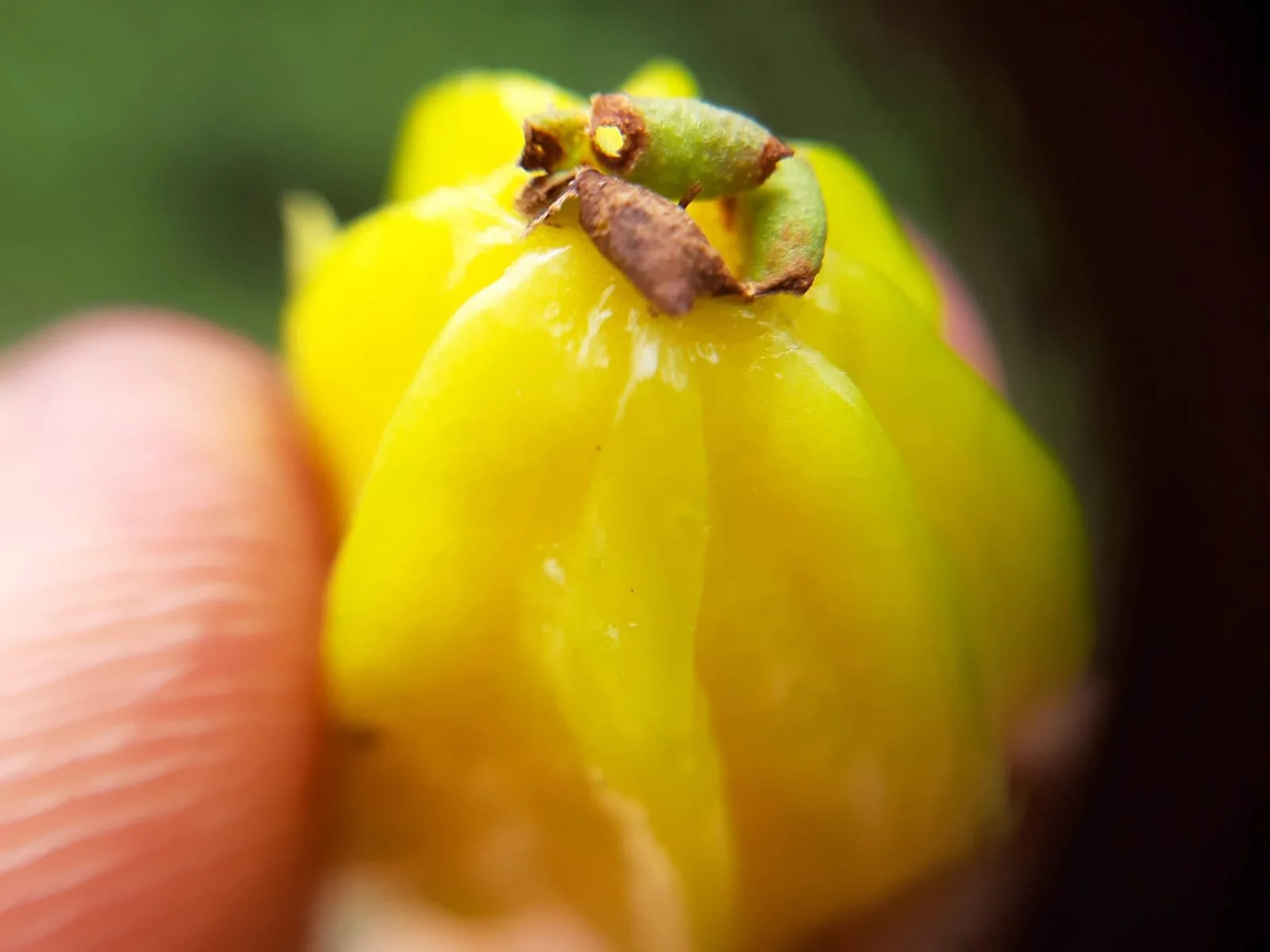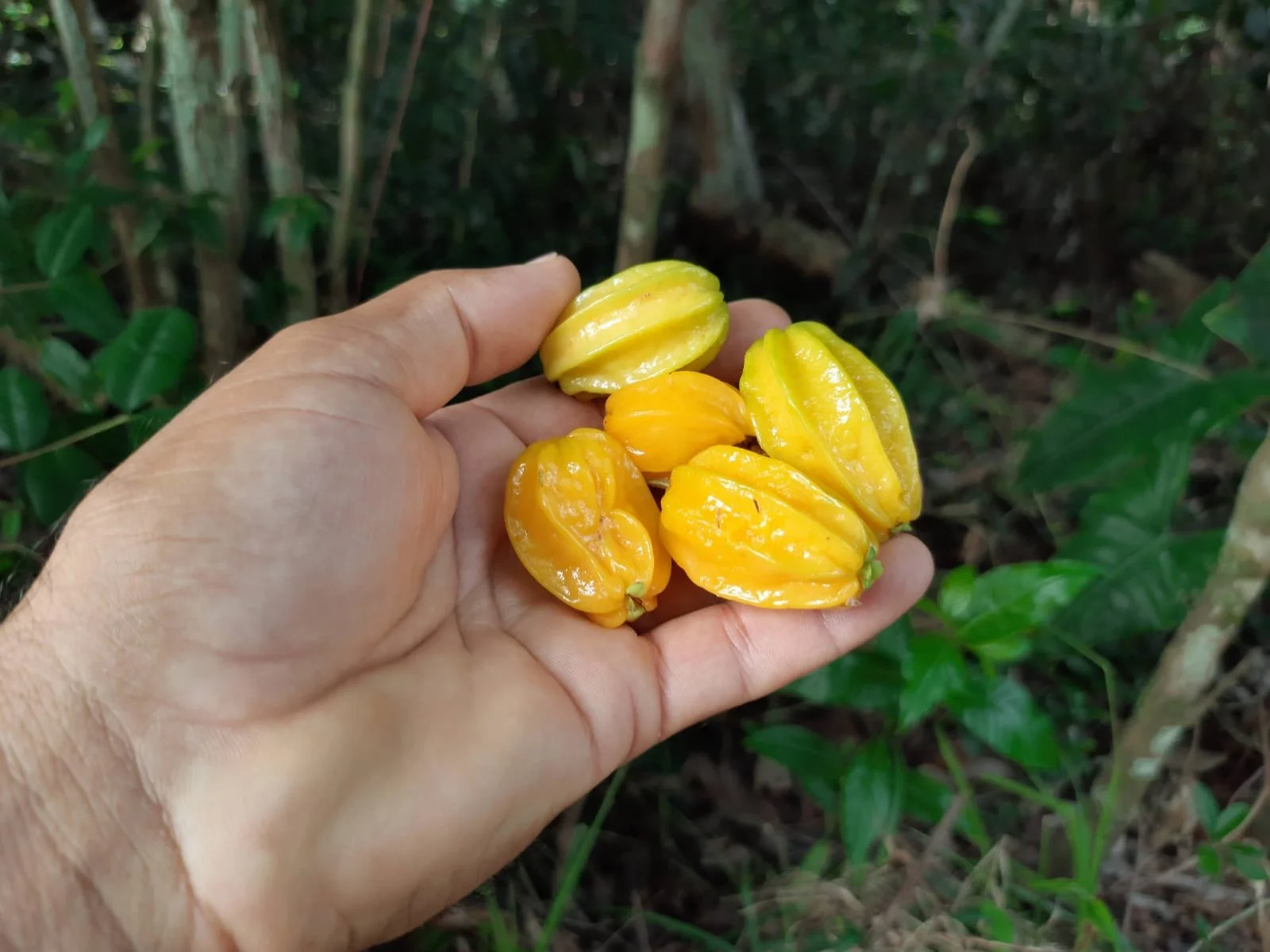 Image 1 of 8
Image 1 of 8

 Image 2 of 8
Image 2 of 8

 Image 3 of 8
Image 3 of 8

 Image 4 of 8
Image 4 of 8

 Image 5 of 8
Image 5 of 8

 Image 6 of 8
Image 6 of 8

 Image 7 of 8
Image 7 of 8

 Image 8 of 8
Image 8 of 8









Eugenia Anthropophaga - GERMINATED
Eugenia anthropophaga, also known as Pitanga-bananinha or Banana Pitanga, is a rare and fascinating species of the Myrtaceae family, native to the coastal forests of Alagoas, Brazil. It thrives in seasonally dry tropical environments, and its natural habitat suggests it may be well-adapted to heat, drought, and coastal conditions.
This species stands out with its unique tree-like structure, developing a tall central trunk and a canopy shape that resembles a dwarf pine, a growth habit unusual among Eugenia species. Typically growing to 2–4 meters in height, it is compact enough for small gardens or even large containers, yet visually striking enough for ornamental use.
The fruits are what truly set Eugenia anthropophaga apart. They are bright yellow, elongated, and measure about 5 cm in length, resembling miniature bananas. The flavor is a delicious balance of sweet and tart, similar to a ripe apricot or passion fruit. The fruit is excellent eaten fresh, and it’s also suitable for juices and jams. It’s reported to begin fruiting within 2 to 3 years, making it both a quick producer and a rewarding addition to any rare fruit collection.
Given its coastal origin and resilient nature, this species is likely to tolerate drought and some cold, especially in subtropical climates. It prefers well-draining, slightly acidic soils and benefits from full sun to partial shade. Its moderate growth rate and low maintenance needs make it a great choice for collectors looking for something both beautiful and productive.
Eugenia anthropophaga, also known as Pitanga-bananinha or Banana Pitanga, is a rare and fascinating species of the Myrtaceae family, native to the coastal forests of Alagoas, Brazil. It thrives in seasonally dry tropical environments, and its natural habitat suggests it may be well-adapted to heat, drought, and coastal conditions.
This species stands out with its unique tree-like structure, developing a tall central trunk and a canopy shape that resembles a dwarf pine, a growth habit unusual among Eugenia species. Typically growing to 2–4 meters in height, it is compact enough for small gardens or even large containers, yet visually striking enough for ornamental use.
The fruits are what truly set Eugenia anthropophaga apart. They are bright yellow, elongated, and measure about 5 cm in length, resembling miniature bananas. The flavor is a delicious balance of sweet and tart, similar to a ripe apricot or passion fruit. The fruit is excellent eaten fresh, and it’s also suitable for juices and jams. It’s reported to begin fruiting within 2 to 3 years, making it both a quick producer and a rewarding addition to any rare fruit collection.
Given its coastal origin and resilient nature, this species is likely to tolerate drought and some cold, especially in subtropical climates. It prefers well-draining, slightly acidic soils and benefits from full sun to partial shade. Its moderate growth rate and low maintenance needs make it a great choice for collectors looking for something both beautiful and productive.

